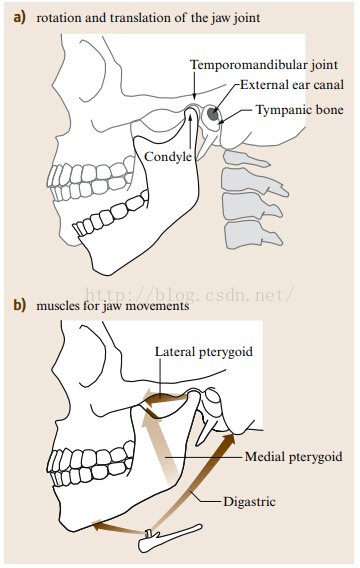Physiological Processes of Speech Production--Reading Notes
Posted
tags:
篇首语:本文由小常识网(cha138.com)小编为大家整理,主要介绍了Physiological Processes of Speech Production--Reading Notes相关的知识,希望对你有一定的参考价值。
Upper Jaw
The upper jaw, or the maxilla with the upper teeth, is the structure fixed to the skull, forming the palatal dome on the arch of the alveolar process with the teeth. It forms a fixed wall of the vocal tract and does not belong to the articulatory organs: yet it is a critical structure for speech articulation because it provides the frame of reference for many articulatory gestures. The structures of the upper jaw offer the location for contact or approximation by many parts of the tongue such as the apex, blade, and dorsum. The phonetics literature describes the place of articulation as classified according to the locations of lingual approximation along the upper jaw for dental, alveolar, and palatal consonants. The hard palate is covered by the thick mucoperiosteum, which has several transverse lines of mucosal folds called the palatine rugae.
The medial pterygoid is mainly used for jaw closing in articulation, and the elastic recoil force of the connective tissues surrounding the mandible is another factor for closing the jaw from its open position.

Figure 10a,b: Actions of the temporomandibular joint and muscles for jaw opening and closing. (a) The lower jaw opens by rotation and translation of the mandible at the temporomandibular joint. Jaw translation is needed for wide opening of the jaw because jaw rotation is limited by the narrow space between the condyle and tympanic bone. (b) Jaw opening in speech depends on the actions of the digastric and medial pterygoid muscles with support of the strap muscles. Jaw closing is carried out by the contraction of the lateral pterygoid muscle and elastic recoil forces of the tissues surrounding the jaw
以上是关于Physiological Processes of Speech Production--Reading Notes的主要内容,如果未能解决你的问题,请参考以下文章
ORA-00064 processes设置过大导致数据库打不开
ES报错Native controller process has stopped - no new native processes can be started